I'm comparing the performance of two haskell programs running the same computation.
The first one is sequential:
main :: IO()
main = putStr $ unlines . map (show . solve) $ [100..107]
where solve x = pow x (10^7) (982451653)
The second one uses Control.Parallel.Strategies:
import Control.Parallel.Strategies
main :: IO()
main = putStr $ unlines . parMap rdeepseq (show . solve) $ [100..107]
where solve x = pow x (10^7) (982451653)
In both cases, pow is the modular exponentiation naively implemented as:
pow :: Int -> Int -> Int -> Int
pow a 0 m = 1
pow a b m = a * (pow a (b-1) m) `mod` m
The sequential program runs in about 3 seconds using, as expected, 100% CPU.
$ stack ghc seq.hs -- -O2
$ \time -f "%e s - %P" ./seq > /dev/null
2.96 s - 100%
The parallel program also runs in about 3 seconds using 100% CPU when limited to a single core.
$ stack ghc par.hs -- -O2 -threaded
$ \time -f "%e s - %P" ./par +RTS -N1 > /dev/null
3.14 s - 99%
But when I ran it on 4 cores, I did not observe the performance gain I was expected:
$ \time -f "%e s - %P" ./par +RTS -N4 > /dev/null
3.31 s - 235%
Even more surprising, the sequential program uses more than 100% CPU when run on several cores:
$ stack ghc seq.hs -- -O2 -threaded
$ \time -f "%e s - %P" ./seq +RTS -N4 > /dev/null
3.26 s - 232%
How can those results be explained?
EDIT - As advised by @RobertK and @Yuras, I replaced the rdeeseq by rpar and it did fix the initial issue. However, the performance is still much less than what I expected:
$ stack ghc par.hs -- -O2 -threaded
$ \time -f "%e s - %P" ./par +RTS -N1 > /dev/null
3.12 s - 99%
$ \time -f "%e s - %P" ./par +RTS -N4 > /dev/null
1.91 s - 368%
The execution time is barely divided by two even though the 4 cores are running more than 90% of the time on average.
Also, some parts of the threadscope graph look very sequential:
